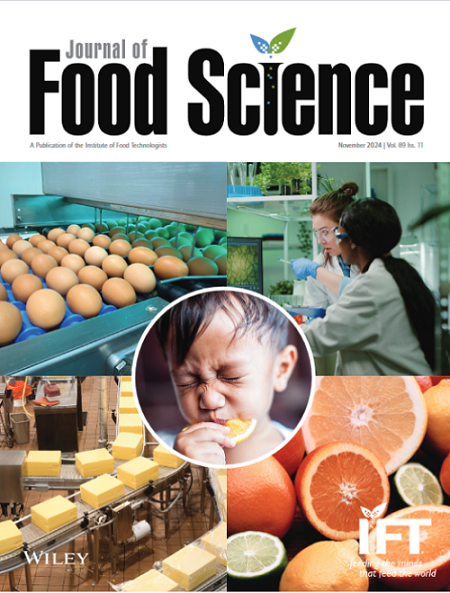Oxidative stability and affective/descriptive sensory properties of cashew nut (Anacardium occidentale L.) oil during accelerated storage conditions
Abstract
Cashew nut (Anacardium occidentale L.) oil is not commonly consumed, but it has great potential to add value to broken nuts. Therefore, studies on its characteristics are important to provide a basis for encouraging consumption. This study aimed to characterize cashew nut oil's physical, chemical, and sensory composition. It also evaluated changes in the oil over 60 days of storage at 30°C, 40°C, and 50°C (accelerated storage). The results showed that cashew nut oil contains anacardic acids and phytosterols and is primarily composed of oleic acid (65.24%–66.49%). Throughout storage, subtle changes in the oxidative quality of the oil were observed, particularly at 50°C, with increases in acid value (0.74–0.96 mg KOH/g) and peroxide value (1.43–4.60 meq/kg), color differences (ΔE, 0.37–8.83), and a reduction in polyunsaturated fatty acids (16.98%–16.63%). However, the acidity and peroxide values did not exceed the limits established by the Codex Alimentarius (4.0 mg KOH/g and 15 meq/kg, respectively). Sensory acceptance decreased over time, but at the end of storage, the oil still received scores above 6 (liked slightly). Furthermore, the Check-All-That-Apply test revealed that the oil exhibited positive sensory attributes, such as yellow color, shiny, light appearance, sweet taste, neutral flavor, and cashew nut aroma. It was concluded that the oil has great potential for commercialization and consumption, both for direct use and in culinary preparations.
Practical Application
Cashew nuts are widely consumed in Brazil, but their oil remains unknown to consumers. However, this product has great potential for commercialization, as it is a food with adequate nutritional, sensory, and oxidative qualities to be included in a balanced and healthy diet, with potential applications for direct consumption and in culinary preparations. It could also help strengthen the production chain for cashew nuts with lower commercial value (broken cashew nuts). The current study aims to expand knowledge about the nutritional and sensory characteristics, as well as the oxidative stability, of cashew nut oil.


 求助内容:
求助内容: 应助结果提醒方式:
应助结果提醒方式:


